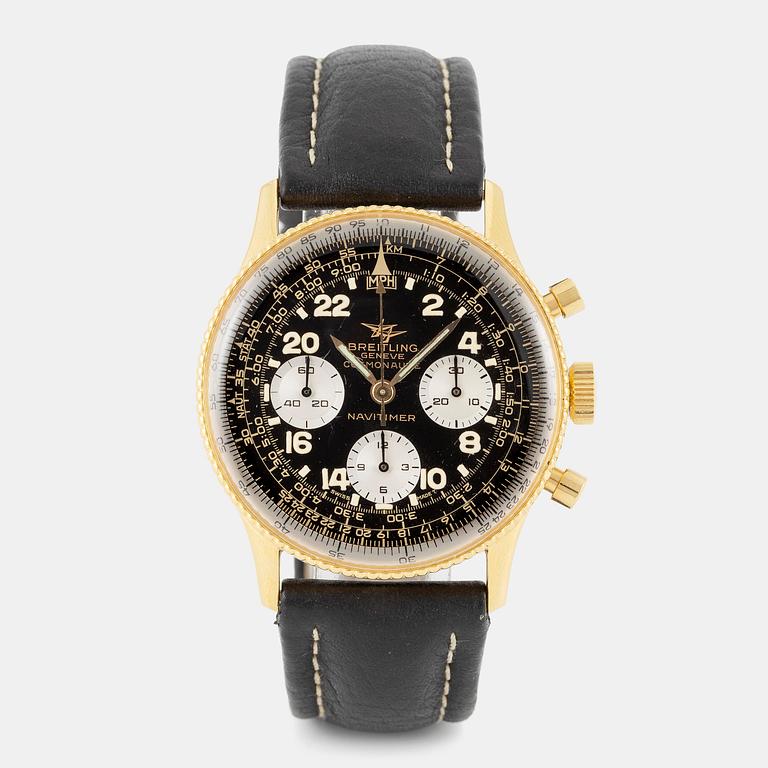Breitling, Navitimer, Cosmonaute, kronograf, ca 1965.
Storlek: 41 mm
Material: doublé
Urverk: manuell, caliber Venus 178 (WOG)
År: cirka 1965
Glas: plexiglas
Armband: läderband
Referensnummer: 809
Serienummer: 1'011'766
Tillbehör: box
Visare med nyare lysmassa. Klockan är i ett välbevarat vintageskick med mindre slitage.
Urverket fungerar vid katalogiseringstidpunkten, Bukowskis garanterar inte att urverket kommer att fungera i framtiden. Observera att urverket inte har testats för tidsprecision och kan behöva servas på köparens bekostnad. Klockorna har öppnats för att undersöka urverket, därför ges inga garantier för att klockorna är vattenresistenta. Potentiella köpare bör inspektera varje klocka för att försäkra sig om dess skick. För mer information, vänligen läs våra Köpvillkor.
Övrig information
Breitling’s Navitimer was already hailed as the definitive pilot’s chronograph by the early 1960s, thanks to its distinctive circular slide rule that allowed aviators to perform in-flight calculations. Yet in May 1962, it secured an even greater claim to fame: becoming the first Swiss wrist-worn chronograph in space. NASA astronaut Scott Carpenter personally requested a customized Navitimer for his Mercury-Atlas 7 mission, one adapted with a 24-hour dial to distinguish day from night in orbit, where sunrises and sunsets come in rapid succession.
He also wanted a stretchable metal bracelet that could fit over his spacesuit, plus a bezel easy to operate with gloved hands. Despite a production window of mere weeks, Willy Breitling and his team delivered precisely what Carpenter needed—later known as the Navitimer Cosmonaute, in time for blastoff on May 24, 1962. Carpenter orbited Earth three times before splashdown in the Atlantic, where saltwater heavily damaged the watch. Nonetheless, Breitling preserved the corroded timepiece, which remains a tangible memento of humanity’s early steps into space. Today, the Navitimer Cosmonaute stands as both an emblem of Breitling’s technical prowess and a tribute to our ongoing fascination with flight, reaching beyond the cockpit and into the cosmos.



























































